2012 Coda EV Review – Video

Anyone willing to drive an electric car is ready to compromise on something, it’s just a question of what.
FAST FACTS
| 1. EPA rated 88-mile range with a 77 MPGe city, 68 MPGe highway and 73 MPGe combined rating. |
| 2. 10-year, 100,000-mile battery pack warranty |
| 3. $38,145 starting MSRP including delivery, or $30,645 after a Federal fax rebate |
| 4. 134 hp and 221 lb-ft of torque. |
| 5. Best-in-class acceleration. |
| 6. Charge time of 6 hours on a 240-volt charger. |
Passing through the winding curves of Topanga Canyon outside Hollywood it’s abundantly clear what those compromises are in the Coda EV.
Torque-a-plenty to pull the car smoothly uphill means acceleration certainly isn’t it, but a quick glance at the remaining charge (now 1 percent) and the weakness seems obvious: range.
Feeling more than a little concerned for the return trip, we stop at a cafe with precious little energy in reserve. Thankfully, this is a media drive and not the real world. After verifying the test car’s starting odometer reading, a quick subtraction reveals that the car has, in fact, travelled 112 miles on a single charge, but more on that later.
CODA: A FRESH TAKE ON ELECTRIC CARS
Coda, a recently formed startup based in California, is the latest comer to the electric car market and easily one of the smallest.
Unlike other EVs available today, this automaker takes a different angle on selling cars – outright honesty to the consumer above an easy sale.
It’s something Coda marketing exec Thomas Hausch quickly pointed to, saying the car’s unique battery pack’s useable charge is actually underrated, sort of like BMW’s upcoming M5 making more power than the brochure says. The biggest difference is this car skips the gas instead of sucking it.
That conservative figure is only part of the bigger picture, though. Coda developed an electric drivetrain first, and then built a car around it. The end result is a more robust, better performing car than the Nissan Leaf or Ford Focus Electric — at least from a specifications perspective.
If you have any doubts about how robust the car really is, the company also backs its battery pack with a 10-year, 100,000-mile warranty.
How is that possible? Coda doesn’t use lithium ion batteries like the others do. Instead it opts for lithium-iron phosphate. Explained simply, the chosen product allows for faster charging in a more stable package designed to outlast a decade of use.
Unfortunately, it also takes up a lot more space than lithium ion units, which is why re-engineered cars like the Focus Electric can’t handle such a system.
To the consumer, that means a more useable car.
BEST-IN CLASS ALMOST EVERYWHERE
Anything but an athlete, the Coda EV still outperforms those it’s pitted against. With a 9.5-second 0-60 time, it’s not going to blow any doors off unless you’re racing someone in a Nissan Leaf – hang on to your granola.
Still, the car feels surprisingly good to drive. With 134 hp and 221 lb-ft of torque, it’s easier than you might think to break the speed limit.
That’s due as much to the fact that like any other electric car, the torque is instant and acceleration totally linear. Getting up to those speeds, the electric motor gives off a high-pitched hum.
It sounds, and in some ways feels, like filling a bottle of water. You get a constant, slow stream with an EV. Gasoline engines, on the other hand, would be more like dumping that water in with a bunch of shot glasses. Faster, yes, but there’s a space between each push. In this case, it’s smooth.
One of the car’s real strengths is in where the battery packs are placed. They sit just above both axles, meaning it has a low center of gravity, which translates to some solid cornering capability.
That aside, Coda’s next strength refers back to the beginning of this story atop Topanga Canyon. It was there that our test car proved that it would not only meet but also trounce the EPA’s expected 88-mile range, traveling 112 on a hot day in thoroughly varied driving conditions. For comparison, we found the Nissan Leaf to offer about 70 miles of real world range.
Range anxiety is notorious among the few and proud who go gasless, and “panic mode” certainly set in during the brief moment where getting stuck seemed imminent. Even then, a quick poke of the smart phone showed charging points within reach – this is LA after all.
Should it have been warranted, a trickle charger packaged in the trunk could have given enough juice to make it home, albeit slowly.
To be fair, Coda doesn’t recommend using a 120-volt charger. Customers are encouraged to spring for the roughly $1,000 GE WattStation that any house wired for a washing machine can handle. So equipped, the 31 kWh pack can go from flat to full in only six hours or 50 miles worth in only two.
Other than helping with cornering, the battery pack placement allows for a 14.1 cubic feet best-in-class trunk space. Regrettably, that’s about the only good thing we can say for the interior.
UNPOLISHED ON THE INSIDE
Where others will nickel-and-dime you to death, Coda offers a short list of options and a base model loaded with most of the available features. In fact, leather seats and a premium sound system are the only extra-cost interior items and they come at a reasonable $1,495 premium.
It’s true that the car’s trunk is more spacious than any other EV in its class. It’s also true that this is your only choice for an all-electric sedan – the others being hatches. The third truth is that picking it means settling for an interior that feels downright outdated.
For example, the center console is held shut by both a latch and a strip of Velcro. Compliance standards require a certain level of resistance when opening the center console and Hausch admitted that needing to use Velcro to meet that requirement is a shortcoming, though one that future cars will remedy.
Beyond that, the steering wheel is missing a Bluetooth button to answer calls despite the car coming with standard hands-free technology. The wheel itself is also very big and feels unwieldy while executing three-point turns.
Coda also puts an Alpine head unit in its cars that looks out of place and out of date. It serves as a handy monitor for delivering vehicle stats, which is useful but suffers from the screen’s poor resolution.
More frustrating than the sailboat-sized steering wheel or poorly designed touch screen interface, there isn’t a comfortable place to rest your left arm while driving.
The gear selection knob also needs work. Spinning it won’t throw you from park into drive and moving between each selection is slow. Despite that, the wheel is free to turn, which means rocking back and forth between drive and reverse in the snow would be a fool’s errand.
Choosing cloth seats lets you feel good about the environment, but we would recommend picking them for a different reason. After only about 1,000 miles of use, our test car’s leather seats already looked like they had been sat in for much longer.
Then again, the Coda is meant primarily as a city-specific car where you might be less likely to want that, but it’s still a small touch that stands out.
EXTERIOR: UNDERSTATED AND OUTDATED
As bad as the interior is, outside the Coda looks more dated than an episode of Friends. Its mediocre looks might, however, help it fly under the radar, which could be a good thing if you’re the sort of person who’s sick of paying for gas but sickened by being branded an EV evangelist.
Were the car released a decade ago, nobody would have raised an eyebrow.
Once again, minor flaws were hard to look past like how the trunk was tough to close and how the door latches sometimes stuck.
Thankfully the car does look better in person (how could it not?) despite its neither-here-nor-there skin.
THE VERDICT
Ringing in at $30,645 after the full federal tax credit, the car sits neatly between the Nissan and Ford options despite only being offered in California dealers for now.
Coda aims to expand into key states by March of next year though, so you might want to keep that in mind before buying one of its competitors.
Buying an EV means compromise. Where you choose to take those compromises is entirely up to you, but in the Coda’s case it means choosing one of the very best electric drivetrains on today’s market while sacrificing much of what makes the Nissan Leaf, Chevrolet Volt and Ford Focus Electric touchable automobiles.
LOVE IT
- Real-world range far exceeds EPA estimate
- Low center of gravity makes turning feel fun
- EV economy without the polarizing looks
LEAVE IT
- Unfinished interior feel
- Trunk tough to close
- Gear selection knob unpredictable and cumbersome
- Insomnia curing looks

Luke is an energetic automotive journalist who spends his time covering industry news and crawling the internet for the latest breaking story. When he isn't in the office, Luke can be found obsessively browsing used car listings, drinking scotch at his favorite bar and dreaming of what to drive next, though the list grows a lot faster than his bank account. He's always on <A title="@lukevandezande on Twitter" href="http://twitter.com/lukevandezande">Twitter</A> looking for a good car conversation. Find Luke on <A title="@lukevandezande on Twitter" href="http://twitter.com/lukevandezande">Twitter</A> and <A title="Luke on Google+" href="http://plus.google.com/112531385961538774338?rel=author">Google+</A>.
More by Luke Vandezande
















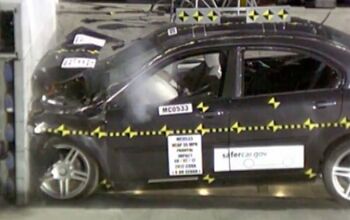


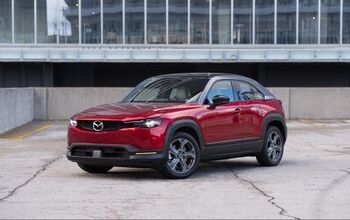
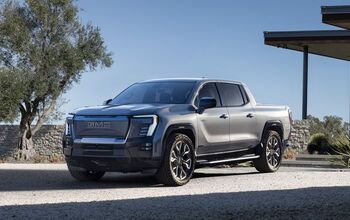



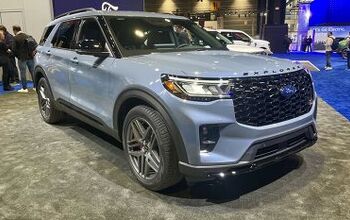
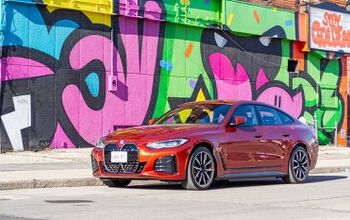

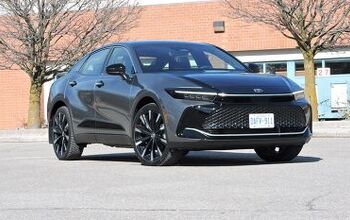
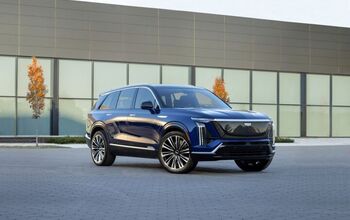
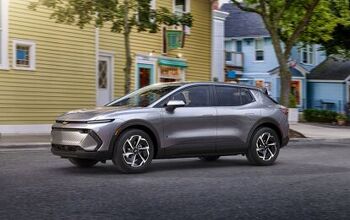

Comments
Join the conversation